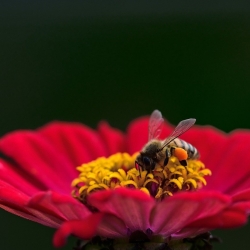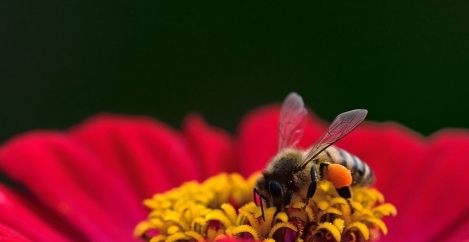January 12, 2024
Landscaping is undergoing its own tech revolution
 We are living through a revolution in automation in landscaping. It is amazing to see how robots equipped with advanced sensors and imaging technologies are now redefining precision in landscaping design and implementation. Drones, for instance, provide an aerial perspective, enabling designers to visualise and plan landscapes with unprecedented accuracy. These tools help optimise the placement of plants, pathways, and other elements, ensuring that every inch of the landscape is utilised efficiently.
We are living through a revolution in automation in landscaping. It is amazing to see how robots equipped with advanced sensors and imaging technologies are now redefining precision in landscaping design and implementation. Drones, for instance, provide an aerial perspective, enabling designers to visualise and plan landscapes with unprecedented accuracy. These tools help optimise the placement of plants, pathways, and other elements, ensuring that every inch of the landscape is utilised efficiently.
Furthermore, the humble lawnmower is evolving into fully automated lawnmowers and trimmers, guided by GPS and mapping technology, that navigate lawns with precision, maintaining consistent grass height. This not only enhances the aesthetics of the landscape but also contributes to the health of the grass by promoting uniform growth.
Robotic systems are also increasingly taking on the responsibility of maintenance and care in landscaping. Intelligent irrigation systems, driven by weather data and soil moisture sensors, ensure that plants receive the right amount of water, reducing water wastage and promoting sustainability. These systems can be programmed to adapt to changing weather conditions, optimising water usage. Furthermore, weeding robots equipped with computer vision and machine learning algorithms can distinguish between weeds and desired plants, allowing for targeted and chemical-free weed control. This not only reduces the need for harmful herbicides but also minimises labour-intensive manual weeding.
It is not only in maintenance and planning that robots have a role to play. According to a paper in Applied Mechanics, robots are also proving invaluable in growing plants, performing tasks such as cutting, de-leafing and trimming. From seeding to planting, robots are increasing productivity and efficiency. The government has also recently announced how it is supporting the move towards increased robotisation. Nineteen farming automation and robotic projects will collectively receive £12.5 million in government funding to advance technologies such as robots, drones, and automated vehicles. This initiative, part of Defra’s Farming Futures Automation and Robotics competition under the Farming Innovation Programme (FIP), aims to boost food productivity and promote sustainable farming practices. Among the projects, one focuses on predicting and improving strawberry yields, minimising waste, and optimising labour and harvesting schedules. Another aims to develop a system for digitally mapping and monitoring vineyards using drones, robots, and sensors. The automation of farming is having a knock-on effect for the automation of landscaping too.
One of the standout areas that robots and technology have impacted on is efficiency. The incorporation of robots in landscaping contributes significantly to increased labour savings. Autonomous vehicles and machinery can perform tasks around the clock without the need for breaks or rest, leading to quicker project completion. This efficiency not only benefits landscaping companies but also reduces costs for clients. Robotic landscape equipment, from excavators to mulchers, enhances productivity by automating heavy and repetitive tasks. This allows human labour to be redirected towards more specialised and creative aspects of landscaping, such as design and artistic installations.
Contributing to sustainability
The integration of robots and technology in landscaping is not only about efficiency but also about environmental sensitivity. Electric-powered robotic equipment reduces the reliance on fossil fuels, lowering carbon emissions and contributing to a greener, more sustainable landscape industry. Additionally, the precision of robotic systems minimises resource wastage, from water to fertilisers, promoting responsible and eco-friendly landscaping practices.
Other technologies are also playing a role in sustainable practices. A paper in Artificial Intelligence in the Life Sciences cites how AI is playing a key role in certain domains within agriculture, like the identification of weeds and application of pesticides, planning for irrigation, monitoring and forecasting crop yields, automation in greenhouses, navigation and path planning, identification and segmentation of diseases, as well as the harvesting of crops and fruits, among other tasks. AI, for example, aids in reducing the use of harmful pesticides by analysing where they are needed and where they are not, improving soil health, and preserving biodiversity.
The positive impact of enhanced natural biodiversity in landscapes is extensive, benefiting both the environment and human well-being. The influence of AI in gardening is also taking off now where real-time data monitoring enables horticulturists to respond to changes in temperature, humidity, and other factors. In controlled indoor environments, they employ data analytics and artificial intelligence to seed, cultivate, and harvest seeds at precise temperatures.
The integration of robots and technology in landscaping represents a paradigm shift in the industry. It not only enhances precision, efficiency, and labour savings but also fosters environmental sustainability. As we embrace the era of smart landscaping, it is crucial to strike a balance between technological innovation and the preservation of the natural world. The future of landscaping lies in the harmonious coexistence of human creativity and robotic precision, paving the way for a greener and more sustainable future.
Phil Lucas is with Gavin Jones, a part of Nurture Group



















